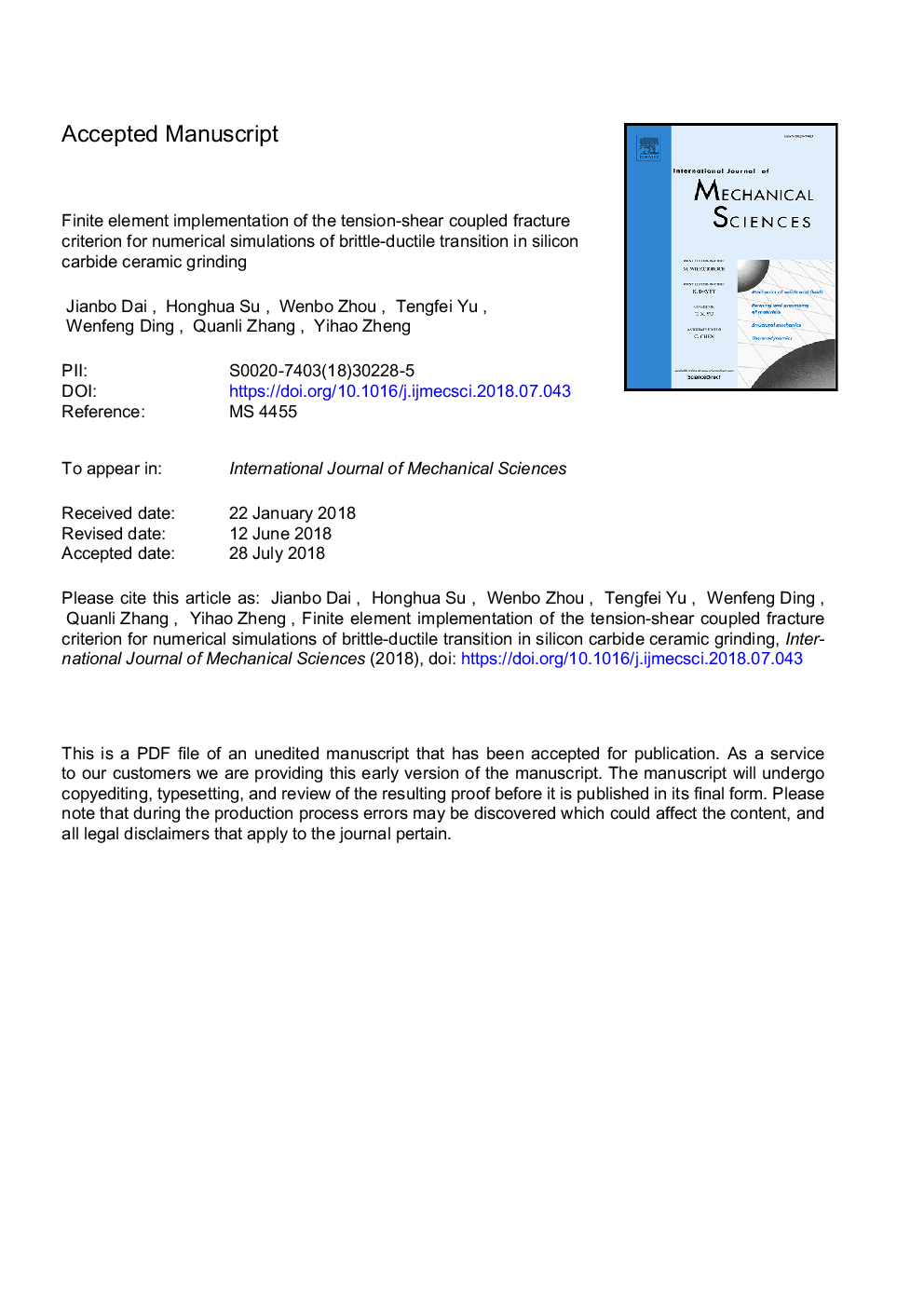| کد مقاله | کد نشریه | سال انتشار | مقاله انگلیسی | نسخه تمام متن |
|---|---|---|---|---|
| 7173549 | 1464945 | 2018 | 18 صفحه PDF | دانلود رایگان |
عنوان انگلیسی مقاله ISI
Finite element implementation of the tension-shear coupled fracture criterion for numerical simulations of brittle-ductile transition in silicon carbide ceramic grinding
ترجمه فارسی عنوان
پیاده سازی عددی از ضریب شکست کششی مرتبط با تنش برشی برای شبیه سازی های عددی انتقال شکننده در مجاورت سنگزنی سرامیک سیلیکون کاربید
دانلود مقاله + سفارش ترجمه
دانلود مقاله ISI انگلیسی
رایگان برای ایرانیان
کلمات کلیدی
معیار شکست شکست تنشی- برشی، معیار شکست شکست پلاستیک معادل، انتقال نادرست سطح مورفولوژی زیرزمینی، نیروی سنگزنی، فشار پتانسیل معادل،
موضوعات مرتبط
مهندسی و علوم پایه
سایر رشته های مهندسی
مهندسی مکانیک
چکیده انگلیسی
147Up to now, few numerical models are available to predict the brittle-ductile transition phenomenon of materials removal mode in engineering ceramics grinding process due to different fracture mechanisms of brittle removal mode and ductile removal mode. To that problem, a new fracture criterion (tension-shear coupled (TSC) fracture criterion) was proposed in the present work to simulate the brittle materials machining process with finite element method. The simulation results (e.g. ground surface/subsurface morphologies, grinding force and equivalent plastic strain) with TSC fracture criterion were compared with those of effective plastic strain (EPS) fracture criterion, which was widely implemented into the commercial finite element software, e.g. ABAQUS, Ls-Dyna etc. The results show that TSC fracture criterion can better characterize BDT in SiC grinding than EPS criterion, via ground surface/subsurface morphology and tangential grinding force. To experimentally validate the proposed TSC fracture criterion, single diamond grain grinding tests were conducted on SiC with various maximum undeformed chip thickness to demonstrate BDT and compare with the simulation results. The measured ground surface morphology evolution and BDT with the increased undeformed chip thickness matched the results of the FEM simulation with TSC fracture criterion.
ناشر
Database: Elsevier - ScienceDirect (ساینس دایرکت)
Journal: International Journal of Mechanical Sciences - Volumes 146â147, October 2018, Pages 211-220
Journal: International Journal of Mechanical Sciences - Volumes 146â147, October 2018, Pages 211-220
نویسندگان
Jianbo Dai, Su Honghua, Zhou Wenbo, Yu Tengfei, Ding Wenfeng, Zhang Quanli, Zheng Yihao,
